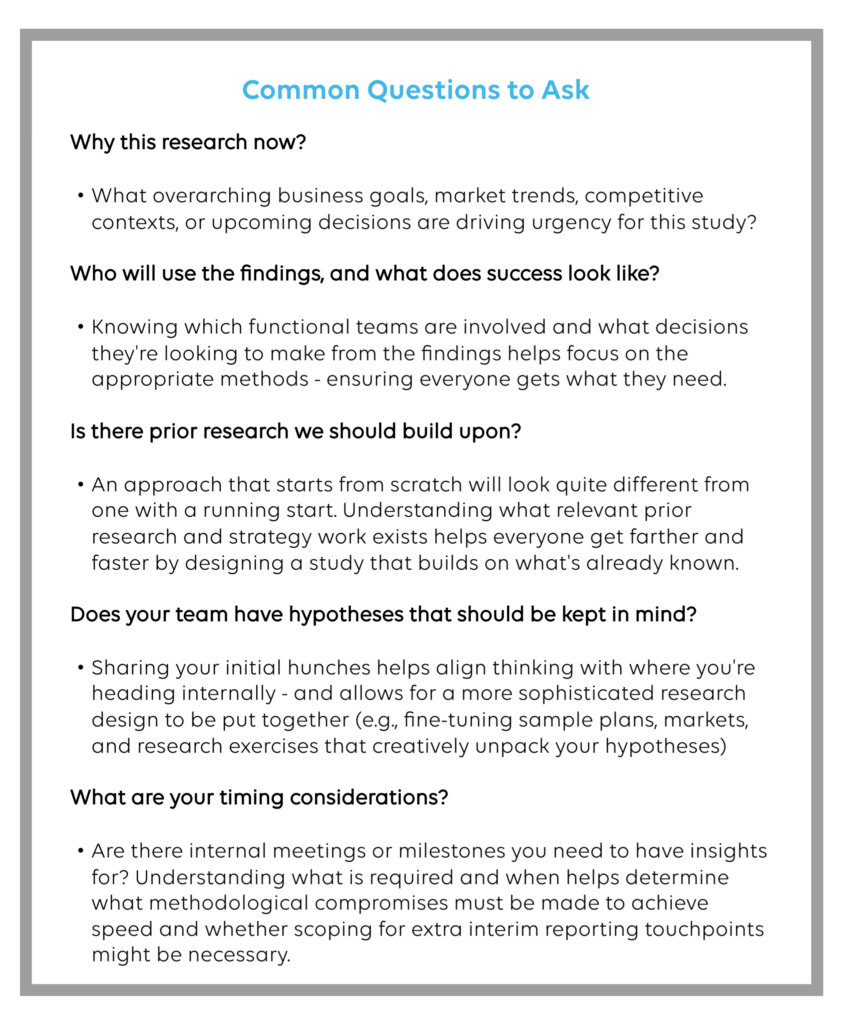We love it when new Request for Proposals (RFPs) land in our inbox. As researchers and data geeks, few things excite us like the fresh opportunity to share creative ways to answer your biggest business questions. And after crafting responses to thousands of RFPs over the years, we’ve found a few helpful tips to make yours better.
Getting your RFP right is a win-win for everyone. It helps you find the best research partner for the job and allows us to design a tailored approach that’s right for the challenge and aligned with your organizational needs. At MarketCast, we pride ourselves in our collaborative, high-touch working style, and we thought it would be helpful to share our thoughts on creating a killer RFP.
1. Collaboration is key
Research projects aim to solve critical business problems. Therefore, it’s vital that the right internal stakeholders on the client side are engaged during the RFP writing process. A collaborative approach ensures that the people most impacted by the work can help define the challenge, outline what success looks like, and set the right questions that need answering.
2. Curate a variety of purposeful questions
Not every RFP will look the same. However, there are a few themes you can carry over from project to project. By curating a library of questions and RFP templates to tap into, you’ll accelerate your process and hopefully establish some consistency.

3. Value transparency
Most RFP respondents would agree that unclear expectations are the most frustrating. Therefore, when you write the RFP, aim to be transparent whenever possible.
Do you have a budget in mind or is the budget approved?
It’s always an awkward question, but trust us, a range or upper limit allows for crafting a study that offers the most bang for your buck. Breaking out core study components and recommending add-ons can always be provided, highlighting what each element adds to the overall research and giving you control over the final scope and investment. And be clear whether your budget is actually approved, especially during times like this when budgets are being scrutinized more than ever.
What will help drive internal buy-in of study findings?
What internal socialization techniques work best for your organization to ensure teams see and understand your findings and implement any research recommendations? Our in-house creative team works hand-in-hand with our researchers and can include options for creative presentations, including videos and other immersive experiences.
4. Avoid template traps
Don’t let your RFP template trip you up – always give it a close inspection before getting started. If it’s been around long enough, it’s likely grown to include a kitchen sink’s worth of company information that doesn’t always apply or, worse, contains errant specs from prior work. And, if you typically copy and paste from previous proposals, this advice is even more critical!
5. Examine and review
Writing a great RFP is a skill that takes practice, and like any project or process, pay attention to the importance of evaluation. Make time annually to diagnose which of your RFPs resulted in the strongest vendor responses and which missed the mark. Ask yourself what worked well, what could be improved, and whether you’re effectively answering the key ingoing questions noted above. And, of course, seek out and share best practices with other RFP writers in your organization!
Of course, everyone has their own views of the perfect RFP. But, we believe these are essential learnings to address and consider when responding to any RFP. Now, get writing!


